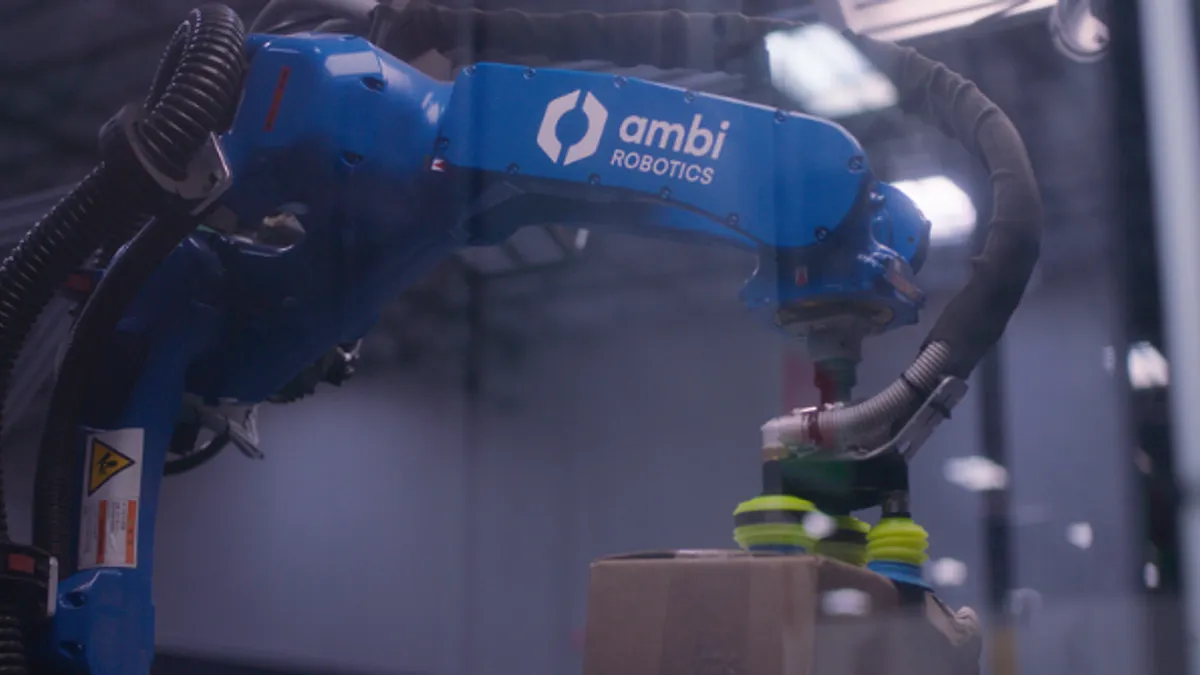What a difference a year makes. In January 2021 Ana Chadwick landed in Pitney Bowes’ CFO seat, drawn from GE Capital by the prospect of helping the more than 100-year-old company continue to expand beyond its postage meter and mailing equipment roots into parcel and e-commerce shipping.
After spending some time listening to and learning from colleagues about the Stamford, Connecticut-based company, Chadwick quickly seized on her treasury group’s suggestion that the company give itself a longer runway by extending its debt maturities. By March, the company had refinanced the terms on about $1.5 billion in debt by three to four years.
“It was pretty fast … Had I hesitated in that decision which the team brought forward I think we’d be in a very different position,” she said in an interview, noting that the refinancing would be more difficult and more expensive to get now in the current rising rate environment. The move underscores Chadwick’s strategy of using automation and other levers she can control to strengthen margins and offset headwinds that she can’t control — such as inflation at a 40-year high and pricing which the company doesn’t yet have the market share to dictate.
“There’s no doubt we’re heading into a more volatile macro environment,” she said. “Part of what I love about this business is that there’s not one lever. There’s the lever on productivity for labor, the productivity for transportation and there’s the equipment you put in your warehouse. We have a lot of puts and takes.”
Workers to manage robots
One of those levers is the use of automation and robots to more efficiently sort packages at facilities. Pitney Bowes and Ambi Robotics in March announced a $23 million project to expand its robotic sortation systems in e-commerce hubs across the U.S. The AI powered robots are replacing a manual system whereby package handlers picked and packed items. Instead, robot operators will work alongside the robotic systems, increasing employee productivity by up to four times, according to a company release.
“The way I think of it is I expect my throughput per employee to be higher,” Chadwick said, noting that employees will ultimately oversee several robots. “I’m not going to say I have more or less labor but that labor is going to have greater productivity because of the investments we are making.”
Other steps that Chadwick is focusing on to optimize operations is to work with engineers to make fleet routes more efficient. That can entail something as simple as making sure trucks are full as well as moving to use more in-house trucks for some routes rather than third parties. Given the high price of gas, it’s also possible to craft different agreements with clients so that fuel costs can be passed through, she said.
The company’s focus on growing its shipping business will be tested in a more challenging environment if inflation eats into consumer spending that helped bolster the parcel shipping sector in the pandemic.
Inflation threatens online spending
There are signs it already has. As consumers returned to shop in stores early this year and inflation crimped discretionary spending, even Amazon.com took a hit, according to an April 29 Retail Dive report. The e-retailer giant reported its first quarterly loss in seven years, The Wall Street Journal reported April 28.
For now, Pitney Bowes is forecasting continued growth in the overall U.S. parcel shipping business, with U.S. parcel volume pegged to reach 25 to 40 billion by 2027, according the May shipping index published by the company. That comes on top of a pandemic surge fueled in part by house-bound shoppers migrating to e-commerce sites that helped grow U.S. parcel volume 6% to a record high of 21.5 billion in 2021, up from 20.3 billion in 2020 and 15 billion in 2019, according to the report.
Pitney Bowes’ strategy entails short-term investment pain in exchange for long-term transformation gain, analysts say. “The transition to higher growth shipping could prove beneficial over the long term given the growth potential for shipping-related offerings, in contrast to the secular decline in mail volumes. Profit margins, however, will continue to suffer from investments to optimize shipping and ecommerce capabilities, and there are execution risks related to growing market share among more diversified and deeper-pocketed shipping providers,” Moody’s analysts wrote in a Feb. 16 report which downgraded Pitney Bowes’ Corporate Family Rating (CFR) to B1 from Ba3 and the Probability of Default Rating (PDR) to B1-PD from Ba3-PD. The company’s shares currently trade in the $4 range, down from about $6.7 in January.
Chadwick declined to say whether she was frustrated by the company’s current valuation. Corporate transformations take time, she said, adding that she must continue to make the case for the company’s progress to investors. “As of last year, over 50% of the company’s revenue came from shipping,” she said. “We’re fairly far along in our journey.”




















